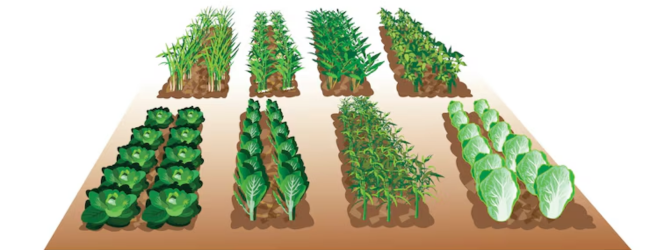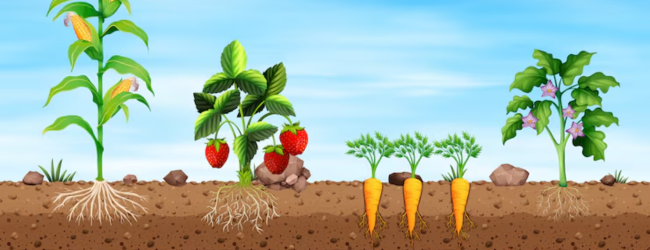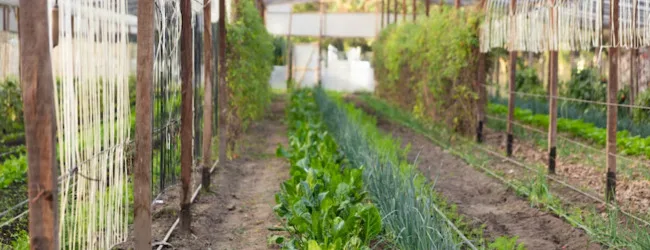Table of contents
- What is Multilayer Farming?
- How Does Multilayer Farming Work?
- Benefits of Multilayer Farming
- Suitable Crops for Multilayer Farming in India
- Step-by-Step Setup Guide
- Investment and Profit Analysis
- Where is Multilayer Farming Practised in India?
- Common Challenges & Smart Tips
- Government Support & Loans
- Conclusion
- Frequently Asked Questions (FAQs)
Multilayer farming is a smart and sustainable way to grow more crops in less space by using vertical layers. It is gaining popularity in India due to its potential for high yield and income from small land holdings. In this article, we will explore everything you need to know about multilayer farming: its meaning, benefits, how it works, suitable crops, cost, profit, and more.
What is Multilayer Farming?

Multilayer farming is a technique where different crops are grown at different heights on the same piece of land to make the best use of space and sunlight.
Key Features:
- Utilises vertical space effectively.
- Grows 3–4 different crops on a single land at the same time.
- Reduces weeds and increases soil fertility.
How Does Multilayer Farming Work?
This system mimics a forest structure where taller trees provide shade to smaller plants.
Typical Layers in Multilayer Farming:
| Layer | Example Crops | Height |
|---|---|---|
| 1st (Tall) | Banana, Papaya, Drumstick | 5–10 ft |
| 2nd (Medium) | Tomato, Brinjal, Chilli | 2–4 ft |
| 3rd (Low) | Ginger, Turmeric, Onion | Ground level |
| 4th (Root) | Radish, Carrot, Potato | Below ground |
💡 Pro Tip: If you want to start a Business but have too many doubts, connect with a Business expert from Boss Wallah for guidance – Check Out
Benefits of Multilayer Farming
Brief: This method offers higher yields, better income, and environmental sustainability.
Major Advantages:
- Higher yield per square foot – up to 3x more than traditional farming.
- Income from multiple crops ensures a consistent cash flow.
- Reduces pest attacks – diverse crops act as natural barriers.
- Conserves water – shade from upper layers reduces evaporation.
- Prevents soil erosion – better root coverage.
Real-Life Example:
In Maharashtra, farmers practising multilayer farming with Banana, Turmeric, and Ginger have reported profits of over ₹1.5 lakh/acre annually.
Suitable Crops for Multilayer Farming in India
Brief: Choose crops that grow well together and do not compete for resources.
Best Crop Combinations:
- Banana + Chilli + Ginger + Onion
- Drumstick + Tomato + Turmeric + Carrot
- Papaya + Brinjal + Coriander + Radish
Byproduct Opportunities:
- Banana stems and leaves for fibre.
- Turmeric and Ginger powder production.
- Tomato pickle or sauce from surplus.
ALSO READ | Find Out 8 Steps of Farming with Pictures: Complete Guide
Step-by-Step Setup Guide

Brief: Proper planning and layout are essential for success.
Step 1: Land Preparation
- Clear weeds and level the land.
- Check soil pH and fertility.
Step 2: Irrigation Planning
- Use drip irrigation for efficient water use.
- Design the layout to avoid waterlogging.
Step 3: Layer Arrangement
- Tall crops on the northern side.
- Short crops on the southern side to ensure sunlight access.
Step 4: Crop Rotation
- Change crop combinations annually to maintain soil health.
Investment and Profit Analysis
Multilayer farming is cost-effective and gives better returns.
| Expense Type | Estimated Cost (per acre) |
| Land Preparation | ₹20,000 |
| Seedlings/Seeds | ₹15,000 |
| Drip Irrigation | ₹25,000 |
| Fertilizers/Pesticides | ₹10,000 |
| Labor | ₹20,000 |
| Total Cost | ₹90,000 |
Expected Returns: ₹1.5 to ₹2 lakh/acre annually (varies by crop).
ALSO READ | Aeroponic Farming: A Complete Guide (2025)
Where is Multilayer Farming Practised in India?
This method is ideal for regions with small land holdings and good irrigation.
Popular States:
- Maharashtra – Satara, Kolhapur
- Tamil Nadu – Coimbatore, Erode
- Karnataka– Belgaum, Dharwad
- Odisha – Koraput
Why These Areas?
- Better awareness among farmers.
- Access to Krishi Vigyan Kendras (KVKs).
- Government training support.
Common Challenges & Smart Tips

With proper care, farmers can overcome most obstacles.
Issues:
- Lack of knowledge or training.
- Poor irrigation system.
- Incorrect crop combination.
Smart Tips:
- Attend free KVK training programs.
- Watch YouTube tutorials from successful Indian farmers.
- Start with a small area (0.5 acre) before scaling.
Government Support & Loans
Brief: Various schemes are available for farmers.
- PM-KISAN: ₹6,000/year support.
- Agri-Infrastructure Fund: Low-interest loans.
- State Agri Departments: Subsidies for drip irrigation.
Visit for updates.
Need Expert Guidance?
Starting a business can be challenging, but you don’t have to do it alone! At Boss Wallah, our 2,000+ business experts are ready to provide valuable insights and guidance. Whether you need help with marketing, finance, sourcing, or any other area of any business, our business experts are here to help you succeed
Confused about Which Business to Start?
Want to start your own business but unsure which one to choose? Explore Boss Wallah, where you’ll find 500+ courses by successful business owners, featuring practical, step-by-step guides on starting and growing various businesses.
Find your perfect business idea today
Conclusion
Multilayer farming is a powerful method to boost crop yield, income, and sustainability for Indian farmers. It makes smart use of land and resources, helps diversify income, and is ideal for small and marginal farmers. With proper planning, crop selection, and care, anyone can adopt this method profitably.
Frequently Asked Questions (FAQs)
1. What is multilayer farming?
It’s a method of growing multiple crops at different vertical levels on the same land.
2. How many crops can be grown in multilayer farming?
Usually 3 to 4 layers of different crops.
3. What is the ideal land size to start multilayer farming?
You can start with just 0.5 acre.
4. Is multilayer farming profitable?
Yes, returns can go up to ₹1.5 lakh/acre or more.
5. Which state is best for multilayer farming?
Maharashtra, Tamil Nadu, and Karnataka are the top states.
6. Can multilayer farming be done organically?
Yes, many farmers are adopting organic multilayer farming.
7. What crops are not suitable?
Tall crops that block all light or require excess water.
8. Does it need a high investment?
No, moderate investment with high returns.
9. Can I get government help?
Yes, through subsidies and loans.
10. Where can I learn more?
Krishi Vigyan Kendras (KVKs), YouTube, and agri-extension offices.


